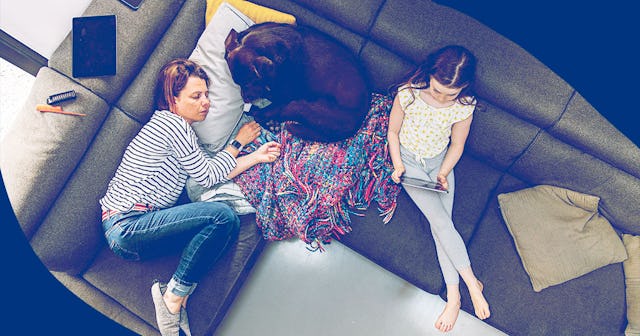Don't Let Quarantine Fatigue Stop You From Acting Responsibly

This may be the nerdiest thing I’ve ever admitted to online, but here it goes. When I turned 16 and got my driver’s license, I was really worried about getting a ticket. Like really worried. So I strictly obeyed all the traffic laws. But in addition, I also made an oath to myself that I would always drive 10 miles per hour under the speed limit. On the freeway, I went 55 instead of 65. In town, I went 25 instead of 35. If the speed limit was 25, I might as well have been cruising around a parking lot. Cars were always lined up behind me, and all my buddies said I drove like their grandparents.
Naturally, I got way over my fear of getting a ticket, got far too comfortable on the road, and within a year I’d been pulled over a handful of times for everything from speeding to not coming to a complete stop at stop sign.
Why am I telling you this story? Because what I went through as a teen actually has a name. It’s called “caution fatigue” and chances are, you are experiencing it right now with COVID-19. Jacqueline Gollan coined the term. She holds two professorships at the Northwestern University Feinberg School of Medicine: one in psychiatry and behavioral sciences, and another in obstetrics and gynecology. Dr. Gollan told CNN that caution fatigue “occurs when people show low motivation or energy to comply with safety guidelines. It’s reflected when we become impatient with warnings, or we don’t believe the warnings to be real or relevant, or we de-emphasize the actual risk. In doing that, we then bend rules or stop safety behaviors like washing hands, wearing masks and social distancing.”
When this pandemic hit, I reverted to my 16-year-old mindset, and went overboard. I was washing my hands so much my knuckles looked like little lizards, and if someone coughed I’d take four step backs instead of two. I disinfected the groceries, and only went to the store when I really, really, had to. I would go days without leaving my house.
But now, months later, I’ve gotten a little lax. This isn’t to say that I’ve gone overboard like I did with speeding. I haven’t gone around hugging strangers or anything, but I don’t wipe down my groceries anymore, and I only wash my hands after the restroom and before and after I go into a store.
However, the real question is, has anything with COVID changed? Well… not really. We still don’t have a vaccine, and if you look at the numbers, we are far from out of the woods. Cases have decreased in some areas of the country, such as New York. But in other areas — like Arizona, Arkansas, Florida, and Texas, for example — it’s raging more than ever. This virus hasn’t gone anywhere. It’s still here. It’s still infecting thousands of people a day.
galitskaya/Getty
The COVID-19 pandemic has now claimed more than 400,000 lives worldwide, according to data collected by Johns Hopkins University. The United States, at over 109,000 cases, accounts for more than a quarter of those deaths. Worldwide, more than 6.9 million people have been infected with the coronavirus since the first known cases began to emerge in the Chinese province of Hubei late last year. Experts at Johns Hopkins say infections are expected to surpass 7 million by mid-week. The U.S. has seen more than 1.9 million cases.
And I know what you are thinking: things are good in your area, and so now you can toss the mask and cut back on buying hand sanitizer. Well… I had that same thought, but then I looked into my home state of Oregon. The infection rate has hit an all-time high here. According to The Oregonian, 620 confirmed or presumed COVID-19 infections were reported in the first week of June, including the state’s largest and second-largest daily case totals of 146 on June 7th and 114 on June 8th.
So the real question is: how do we get over caution fatigue (or, more aptly, “quarantine fatigue”)? Going back to Dr. Gollan, one way is to take a moment and look at the numbers just like I did above. Be informed, and realize that the threat is still very real, even if you can’t see the virus in front of you like some snarling monster.
The biggest game changer to combat quarantine fatigue is to reframe your thinking. Take the time to realize that your behavior directly affects your chances of getting sick, and thus your chances of spreading the virus to people around you. People tend to overvalue what’s already happened, assuming if they haven’t gotten sick yet they never will. “But if your behavior changes and you have a gradual decline in your safety behaviors, then the risk may increase over time,” Gollan says. Really think about that, because that little reality check can prevent you from falling into what Gollan calls “thinking traps,” like convincing yourself another trip to the grocery store is absolutely necessary, when in fact, you might just be bored.
Don’t fall into the quarantine fatigue trap, my friends. And if you are in it, change your thinking. All in all, the goal here is to keep yourself — and in turn, your family and your community — safe.
This article was originally published on